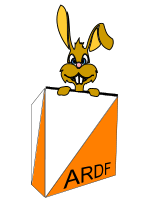 | ||||||||
| CLICK HERE TO GO TO NEW WEB SITE | ||||||||
THIS PAGE IS RETAINED FOR ARCHIVE PURPOSES ONLYThe design is not currently maintained.ROX-2 2m ARDF Receiver for Radio Orienteering.


ROX-2 does not rely on front-end attenuation to knock down the signal instead the linear and wide dynamic range of the RSSI output from the SA605D, drives a sensitive audio-s-meter (squeaker), which is used to detect signal change.
A 'range control' simply reduces the RSSI voltage to the squeaker to pull down the tone to a comfortable lower pitch. Although the control will also reduce the sensitivity of the squeaker, signal change detection is excellent for all positions of the range control. A simple front-end attenuator switch is provided to prevent saturating the ROX-2 when very close to an ARDF transmitter (less than 30m). The switch open circuits the antenna feed, to provide additional attenuation and thus a good indicator of the closness of the transmitter. This will allow you to direction find, right up to the ARDF transmitter antenna. When the RX is housed in a RFI coated ABS box and directly mounted behind the driven elements of a 3 element tape beam, the all-in weight is an unbeatable, lightweight 390gms.

Key improvements from ROX-1

No such problems are evident with the 10.7MHz IF. The use of 10.7MHz filters with a wider bandwidth has allowed the tuning range to be increased to 2Mhz and tuning is less critical. 

NOTES (SA605D/615D version)In most cases the ROX-2 will happily operate with a 5v regulator rather than the 6v shown, but occasionally I get a ROX-2 build which shows lower gain, in which case the higher 6v supply is required.It is worthwhile trying a 5v regulator first because a 6v regulator will significantly shorten the useable life for non-rechargeable batteries. Rechargeable batteries are not effected, so are recommended. SA636DK version
The SA636DK has been successfully used as an alternative to the SA605D, several advantages over the later.
Please also note, because the ROX -2 is directly coupled to the antenna the integrated 3-element tape beam is a slightly modified version of the standard version, presented elsewhere on this web site. The hairpin matching loop is not required if the driven element is cut to the longer span of 990 mm.
FM / FOXHUNT USE ?The Rox-2 is not specifically designed for FM, but regardless, is used by the author and others on local club (FM) foxhunts with good resuts! It gives weak demodulation of FM, but is usually adequate to determine that the correct signal is being received. A panel socket can be wired the 'free pole' of the attenuator switch, to allow a more sensitive HT to be temporarily attached for long distance. Thanks to Ken, M0AET for that tip.COMPETATIVE ?Despite being a simple device, the ROX-2 has been proven to be competative in International competitions.Thankfully Radio-0 does not make heavy demands on receiver performance so it is open to real success with super-simple, lightweight and cheap home-brew equipment, remember ...
PDF DOWNLOADSUPDATES
REFERENCESSA605 4046 Audio S-meter.
| ||||||||